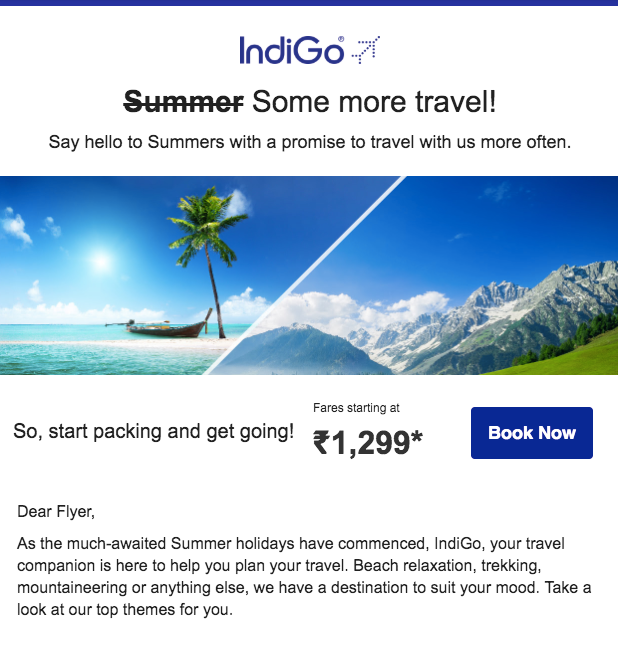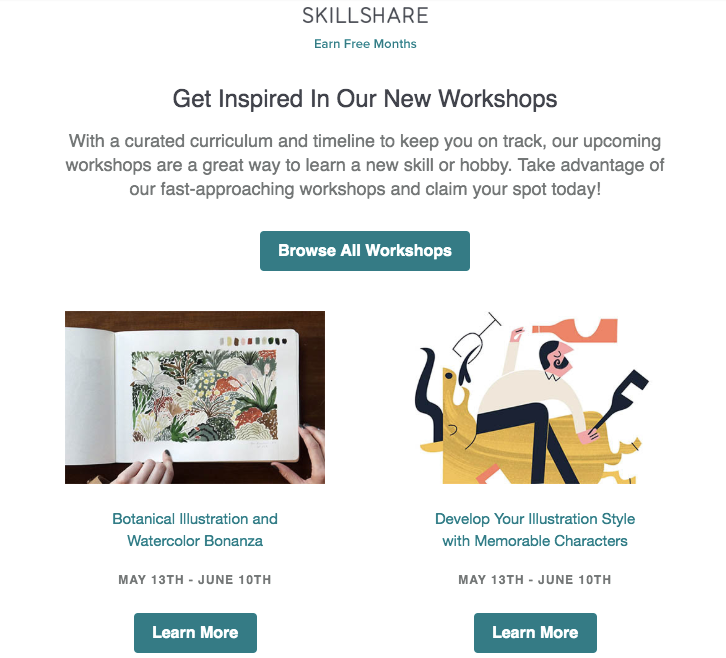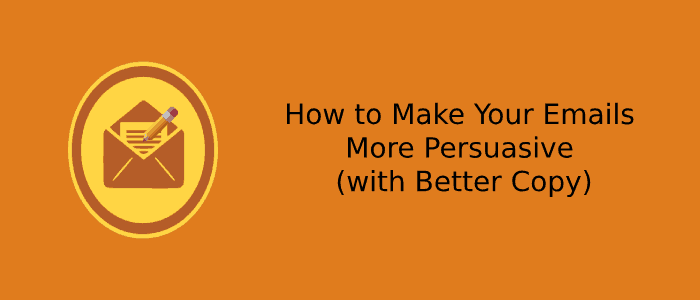An average person gets around 90 emails a day, and yours is just one of them. Unless your email manages to grab their attention, it will just sit in their inboxes, unopened. And possibly get moved to the trash as well, without ever being read.
So what does it take to make your emails stand out in the already overcrowded inboxes of your subscribers? And get more opens and clicks?
Well, it takes some persuasive email copywriting, i.e., copy that’s optimized for higher engagement.
So let’s see a few email copywriting hacks that will help you write more compelling emails that get higher open and click-through rates (and more sales).
Subject line copywriting
In the real sense, email copywriting starts right at the subject line because that’s what your subscribers see the moment your emails land into their inboxes.
You’ll be surprised to know that about half of your subscribers decide to open your email based on its subject line alone. Also, a whopping 69% of your subscribers could report your email as SPAM based solely on its subject line.
A good subject line copy doesn’t just get you more email opens but also brings down your SPAM reporting instances. Here are a few ways to pack more power into your subject line copy and boost your email opens:
Keep it short: An ideal email subject line length is about 50 characters, which comes at around 5-6 words. Any longer, and it won’t display fully on mobile devices. And given that most users check their emails on their mobiles, a long subject line can adversely affect your email open rate. Here’s a great example of a short subject line from Indigo Airlines:

Personalize it: As humans, we’re almost hardwired to respond when our names are called out. Copywriters often use this hack in their copy to make it more personal and inspire action. So try including your subscriber’s name in your subject line. Personalized email subject lines have shown to boost open rates by as much as 29%.
Here’s an example of a personalized subject line from Pepperfry (an online furniture store):

Keep it clear: An email subject line must be clear so that your subscribers can process it quickly and know what to expect when they open your email. Here’s an example of a clear subject line from Apple:

Email body copywriting
After you’ve written an email subject line that convinces your subscribers to open your emails, it’s time to write an email copy that follows up on what was mentioned in the subject line. Matching your email copy with the promise made in the subject line is one of the surest ways of writing more engaging copy.
Below, you can see the email that Indigo created for its Summer deal subject line from the above example.
Now, as you can notice, the email hooks its subscribers by reinforcing the subject line offers. There’s absolutely no scope for the subscribers to get confused or feel lost after opening the email. They get exactly what they’re promised before opening the email:

Now, you might think that matching your email copy with your subject line is the most natural thing to do…
Sure, it is.
But quite a few brands fail to get it right. Their email copy and subject line feel disconnected and end up confusing and frustrating their subscribers. Instead of building up on the subject line and hand-holding the subscribers to performing the desired action, their copy makes the subscribers feel lost and naturally results in fewer clicks.
Another power move for writing better email copy is to segment your list. So, for example, if you sell apparels for both men and women, write two emails with each targeting a single segment.
Such personalized email copy connects with the segments at a whole new level and gets the subscribers to engage.
Finally, after you’ve nailed your email copy, it’s time to fix your CTA button copy as that’s what gets you the clicks!
CTA button copywriting
Your button copy has a direct impact on your click-through rate. Making your button copy even a little more persuasive can result in significant lifts in your email click-through rates.
So how do you write more persuasive copy for your email CTA buttons?
Well, the best tip here is to use action words in it.
Action words such as “buy,” ”download,” “shop,” “order,” “sign up,” and others help subscribers understand what clicking will get them. Such clear words act like strong nudges to go ahead and click!
Here’s an example of a strong CTA button copy from Skillshare:

Wrapping it up…
In a crowded inbox, getting your subscribers to notice your emails, open them, and then click through to visit your website or make a purchase is difficult.
But you can earn your chance by working on your email copy and making it more persuasive.
Enticing subject lines, targeted copy, and powerful call to actions are your best tools here. So try out these tips and see for yourself how small email copy tweaks can get you big email marketing wins.

